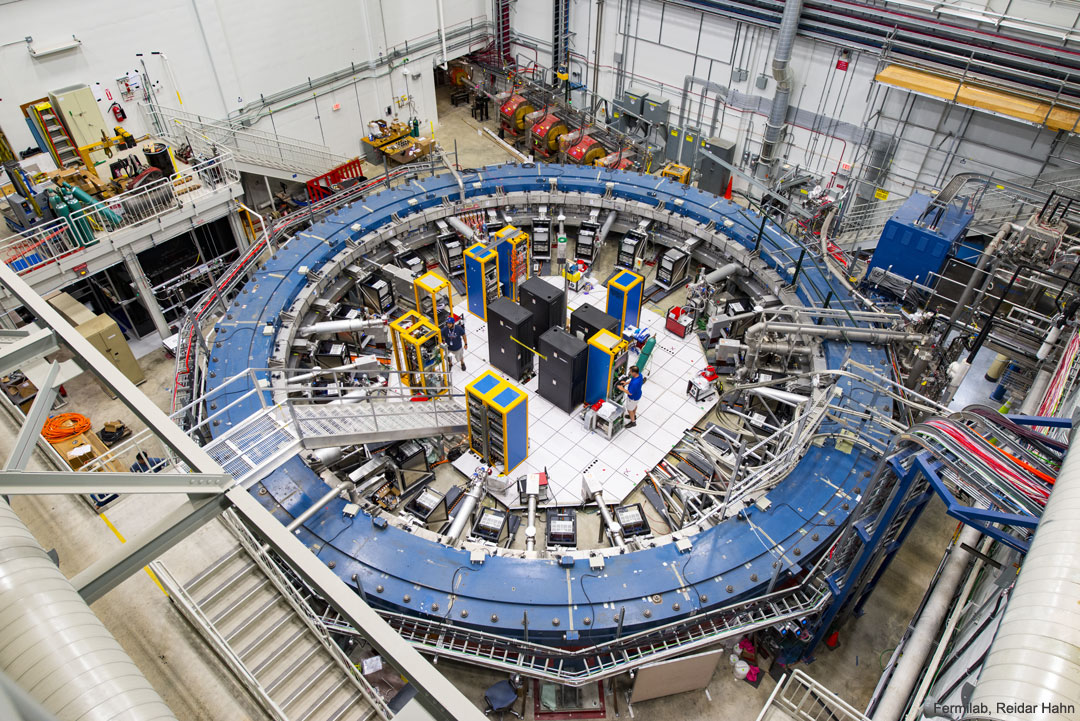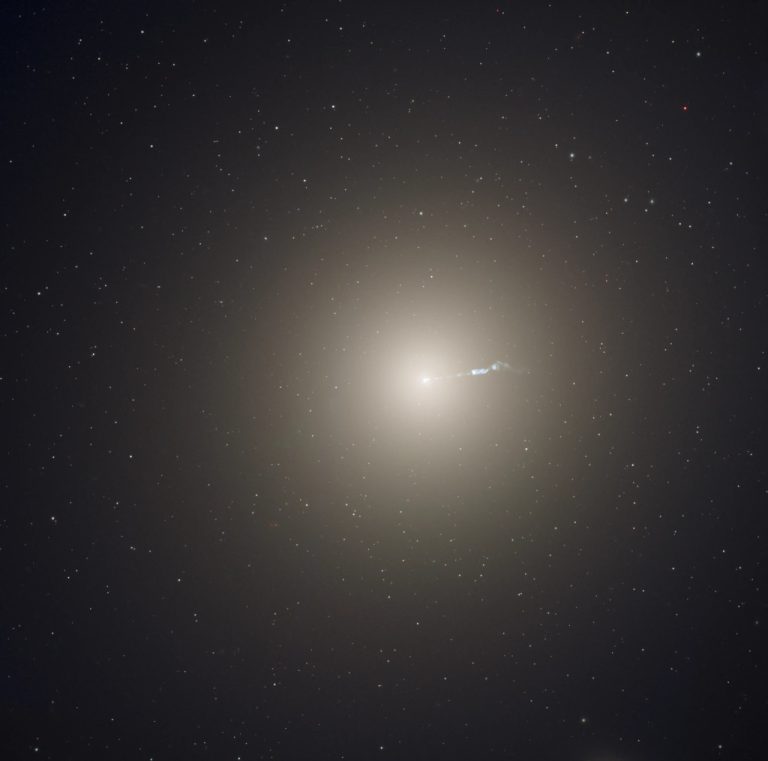2021年04月13日
Confirmed Muon Wobble Remains Unexplained
Image Credit: Fermi National Accelerator Laboratory; Photographer: Reidar Hahn
Explanation: How fast do elementary particles wobble? A surprising answer to this seemingly inconsequential question came out of Brookhaven National Laboratory in New York, USA in 2001, and indicated that the Standard Model of Particle Physics, adopted widely in physics, is incomplete. Specifically, the muon, a particle with similarities to a heavy electron, has had its relatively large wobble under scrutiny in a series of experiments known as g-2 (gee-minus-two). The Brookhaven result galvanized other experimental groups around the world to confirm it, and pressured theorists to better understand it. Reporting in last week, the most sensitive muon wobble experiment yet, conducted at Fermi National Accelerator Laboratory (Fermilab) in Illinois and pictured here, agreed with the Brookhaven result. The unexpected wobble rate may indicate that an ever-present sea of virtual particles includes types not currently known. Alternatively, it may indicate that flaws exist in difficult theoretical prediction calculations. Future runs at Fermilab’s g-2 experiment will further increase precision and, possibly, the statistical difference between the universe we measure and the universe we understand.
Tomorrow’s picture: supernova shock wave
缈子确定有无法解释的晃动
影像提供: Fermilab National Laboratory; Photographer: Reidar Hahn
说明: 基本粒子能晃动多快呢?这个看似不搭调问题的意外解答,是在2001年由美国.纽约州的布鲁克黑文国家实验室所提出。这项结果指出:广为接受的粒子物理标准模型并不完整,也暗示宇宙还有待发现的基本组成。更具体的说,自从1999年进行了一序列称为g-2(g负2)的实验,以量测性质类似电子但质量较大的缈子,结果发现它有大于预期的晃动。这项在布鲁克黑文国家实验室获得的成果,激发世界各地的团队进行确认实验,并让理论学家致力于了解这项结果。上星期,在美国伊利诺州的费米国家实验室(参见上图)进行,截自目前最灵敏精密的缈子晃动实验,发布与布鲁克黑文实验室一致的成果,亦即缈子具有超量的异常晃动。缈子的晃动率,与奇异虚粒子海里大量随机生成湮没的粒子紧密相关。缈子异常的晃动率,或许暗示这片粒子海里,有超出标准模型的虚粒子。或者这项结果暗示,使用超级电脑及极端复杂程式进行的理论预测有缺陷。后续在费米实验室进行的g-2实验,将致力于提升精密度,可能的话并找出我们了解的与量测的宇宙,二者之间的统计学差异。 (muon wobble 缈子晃动)
明日的图片: supernova shock wave







